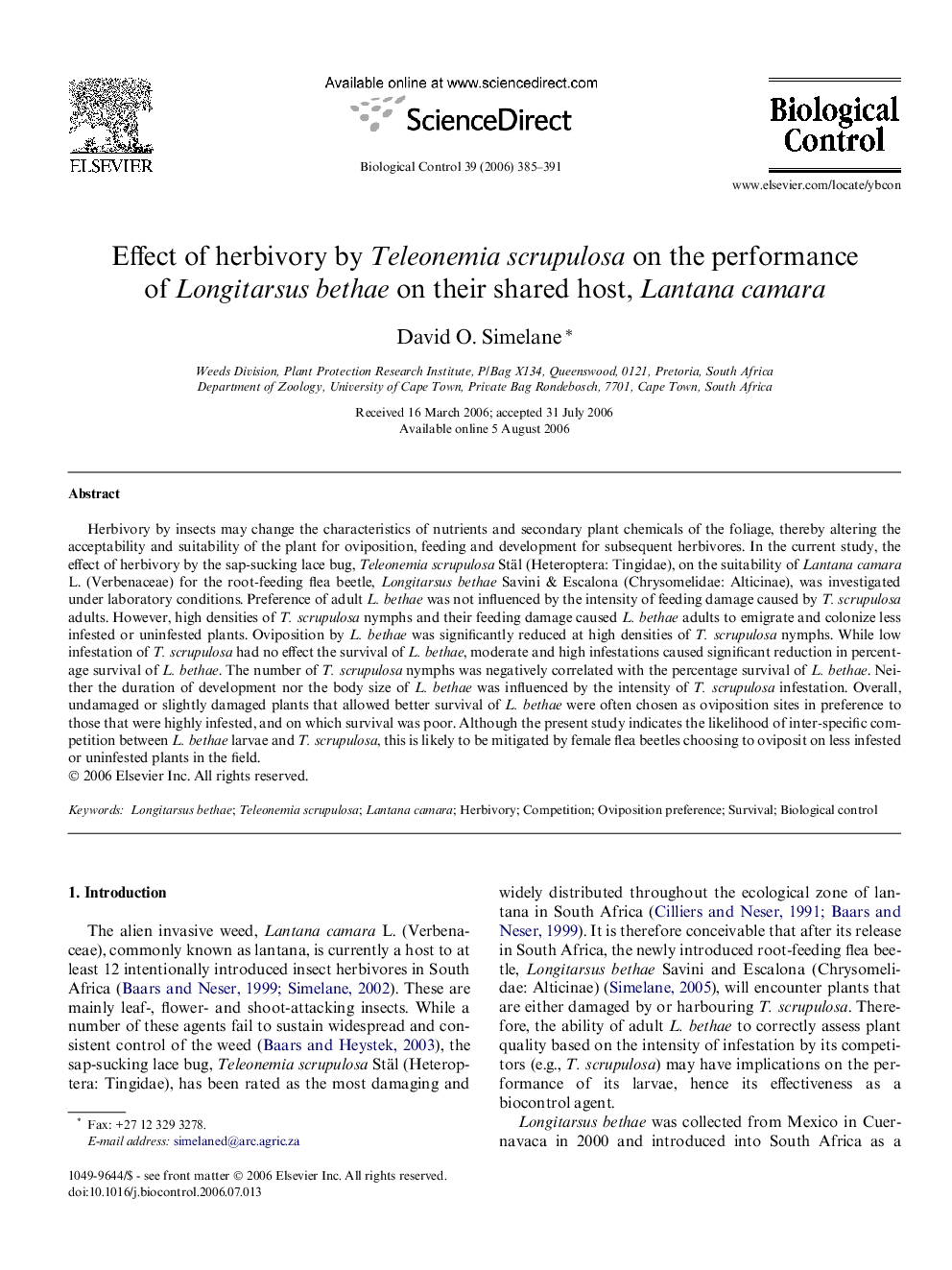| Article ID | Journal | Published Year | Pages | File Type |
|---|---|---|---|---|
| 4505386 | Biological Control | 2006 | 7 Pages |
Herbivory by insects may change the characteristics of nutrients and secondary plant chemicals of the foliage, thereby altering the acceptability and suitability of the plant for oviposition, feeding and development for subsequent herbivores. In the current study, the effect of herbivory by the sap-sucking lace bug, Teleonemia scrupulosa Stäl (Heteroptera: Tingidae), on the suitability of Lantana camara L. (Verbenaceae) for the root-feeding flea beetle, Longitarsus bethae Savini & Escalona (Chrysomelidae: Alticinae), was investigated under laboratory conditions. Preference of adult L. bethae was not influenced by the intensity of feeding damage caused by T. scrupulosa adults. However, high densities of T. scrupulosa nymphs and their feeding damage caused L. bethae adults to emigrate and colonize less infested or uninfested plants. Oviposition by L. bethae was significantly reduced at high densities of T. scrupulosa nymphs. While low infestation of T. scrupulosa had no effect the survival of L. bethae, moderate and high infestations caused significant reduction in percentage survival of L. bethae. The number of T. scrupulosa nymphs was negatively correlated with the percentage survival of L. bethae. Neither the duration of development nor the body size of L. bethae was influenced by the intensity of T. scrupulosa infestation. Overall, undamaged or slightly damaged plants that allowed better survival of L. bethae were often chosen as oviposition sites in preference to those that were highly infested, and on which survival was poor. Although the present study indicates the likelihood of inter-specific competition between L. bethae larvae and T. scrupulosa, this is likely to be mitigated by female flea beetles choosing to oviposit on less infested or uninfested plants in the field.
